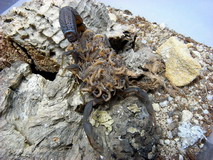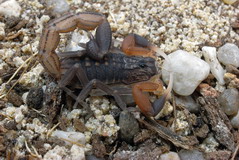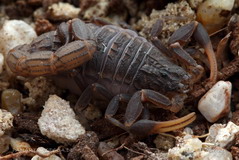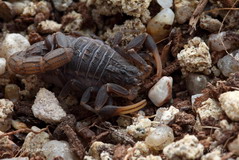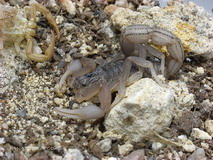- Akravidae
- Bothriuridae
- Buthidae
- Babycurus jacksoni
- Centruroides gracilis
- Centruroides meisei
- Centruroides nigrenscens
- Hottentotta hottentotta
- Lychas mucronatus
- Lychas scutilus
- Parabuthus pallidus
- Parabuthus raudus
- Parabuthus villosus "black"
- Caraboctonidae
- Chactidae
- Chaerilidae
- Euscorpiidae
- Hemiscorpiidae
- Iuridae
- Pseudochactidae
- Scorpionidae
- Superstitioniidae
- Troglotayosicidae
- Typhlochactidae
- Vaejovidae

Hottentotta hottentotta (Fabricius, 1787)
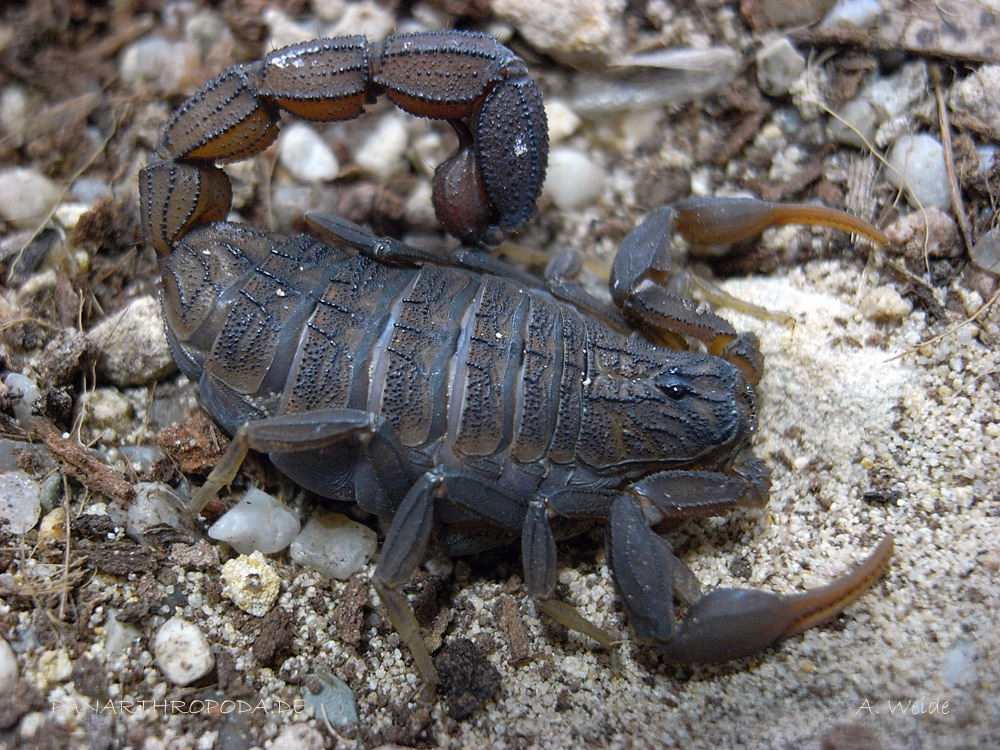
Adult female
Origin and occurrence
My specimen originated from Cape Verde. Therefore it is the former species H. caboverdensis, that has been synonymized with H. hottentotta.
Hottentotta hottentotta occurs in a wide area in western and central Africa which includes the following countries: Benin, Burkina Faso, Cameroon, Tschad, Cape Verde, Congo, Ivory Coast, Gambia, Guinea, Guinea-Bissau, Mali, Niger, Nigeria, Central African Republic, Senegal, Sierra Leone and Togo.
Appearance and sexual dimorphism
Inside this huge distribution area different populations with different morphological and color-related varieties appear. The size of this species fluctuates between 5 and 8 cm - with males staying smaller. The specimen from Cape Verde have a gray-brown color, that shimmers in a red tone at some places. The granules are black. I can not give any information on the sexual dimorphism since only females reproducing parthenogenetically are available in the hobby. I am not aware of any males in Cape Verde. There are known males in other populations.
Behavior
H. hottentotta is rather calm, they will only threaten when disturbed over a longer period. This species hides underneath stones and bark, digging shallow cavities without any tunnels. During night they are quite active and stride around. This behavior changes in gravid females. They will sit outside their hideouts during day, too, near to the source of heat. After this behavior is present, littering will take place within a few weeks. With the young on their backs the females are much more aggressive and threaten immediately when disturbed. Stinging attemps happen seldom nevertheless.
I have only tried to keep two females together on one occasion. They did not share a hideout and attacked each other on sight. Keeping the species in groups can therefore not be recommended, however further observations should be made.
Keeping conditions
A container measuring 20 x 20 cm is sufficient to house one specimen. The heigth of the container is not important since this species does not climb. Hideouts can be offered in form of stones and bark. Temperatures of 30 ŌĆō 35 ┬░C during day and about 20 ┬░C during night sould be achieved. Since the humidity in Cape Verde reaches about 70%, I keep one corner of the container moist constantly. I use a mixture of sand and earth as substat, which should at least be 3 to 4 cm high.
Mating and raising the young
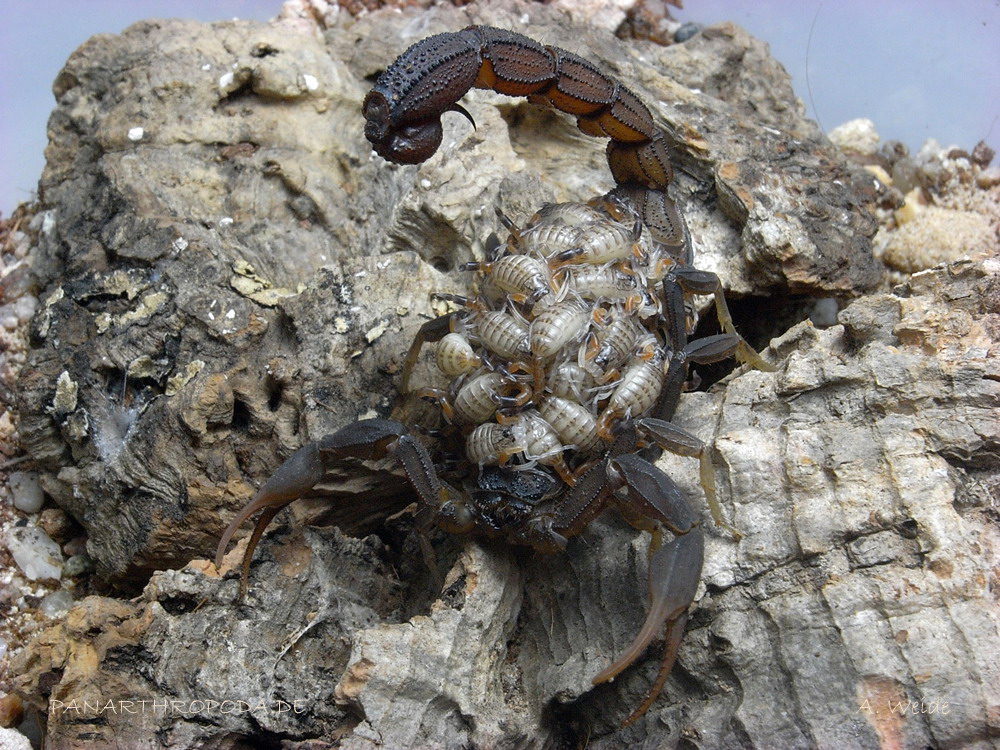
Adult female with young in first instar
Breeding H. hottentotta is not complicated since the females are parthenogenetic. Therefore even unfertilized eggs develope into embryos. They share their genotype with the mother and therefore are female, too. The gestation time is about 4 to 6 months long. The litter can contain more then 40 young. They will molt into second instar within a weeks time and leave the mother's back. When the young are independent they will kill small crickets reaching their own bodysize. They can be kept under the same conditions as the adults. When fed properly they can reach adulthood within 12 to 18 months - adulthood is achieved in 7. instar in females. When kept in a group cannibalism will most likely happen, especially during molts.
It is rather problematic due to the parthenogenesis that the scorpions will litter every few months - and there is nothing one can do about it. Therefore it is possible, that a large amount of young pile up, especially when a few more adult specimen are kept.
A. Weide


